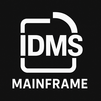
The IBM OpenPages Administration course provides comprehensive training on configuring and maintaining the OpenPages GRC platform. It covers core administrative tasks such as user and role management, workflow configuration, object modeling, field-level security, reporting, and scheduler automation. Learners will gain hands-on experience in customizing OpenPages to align with organizational governance and compliance needs. This course is ideal for IT administrators, GRC consultants, and professionals responsible for enterprise risk systems.
IBM OpenPages Administration Training Interview Questions Answers - For Intermediate
1. What are the key steps in configuring a new Object in OpenPages?
Configuring a new Object involves defining the object in the metadata model, setting up its fields, relationships, object types, and views. Administrators must also configure the access control, associate workflows, and ensure the object is exposed to relevant profiles. Once deployed, it becomes available for use in the application and can be populated with data.
2. How does OpenPages handle multilingual support?
OpenPages supports multilingual environments through the use of language packs and property files that contain translated labels, field names, and interface components. Administrators can enable different languages and assign them to user profiles. This ensures that users across different regions experience the application in their preferred language without altering backend configurations.
3. Explain the use of Calculated Fields in OpenPages.
Calculated fields are used to dynamically generate values based on formulas or expressions involving other fields. These fields can perform arithmetic operations, text manipulations, or conditional logic. They help automate data consistency and eliminate the need for manual calculations, often used in scoring, risk ratings, or status indicators.
4. What is the difference between a Profile and a Role in OpenPages?
A Profile determines what the user interface looks like for a particular group of users, including layout, visibility of fields, and menu options. A Role, on the other hand, defines what actions a user can perform, such as create, read, update, or delete records. Profiles control appearance and experience, while Roles manage permissions and access control.
5. How are Key Risk Indicators (KRIs) managed in OpenPages?
KRIs are managed using dedicated objects that allow users to define thresholds, frequency of measurement, and ownership. They can be linked to risks or business units and include automated alerts when thresholds are breached. KRI trends are also visualized in dashboards, enabling proactive risk management based on early warning signs.
6. How does OpenPages support audit management processes?
OpenPages includes an Internal Audit Management module that facilitates audit planning, fieldwork, issue tracking, and reporting. Auditors can assign tasks, upload evidence, document findings, and generate reports. The system provides visibility into audit coverage, schedules, and follow-ups, promoting transparency and accountability in the audit lifecycle.
7. What is the use of Query Subjects in Cognos for OpenPages Reporting?
Query Subjects in Cognos are logical groupings of data elements used to build reports. For OpenPages, they map directly to objects and their attributes. Report developers use them to drag and drop fields, create joins, filters, and calculations. They serve as the foundation for customized reporting in the OpenPages environment.
8. How can administrators deploy changes from a development to a production environment?
Administrators typically use OpenPages utilities such as Migration Tools or XML-based export/import scripts to move configurations, objects, workflows, and views from development to production. This ensures consistency across environments and helps test changes before go-live. Proper versioning and rollback planning are also essential during deployment.
9. What is the purpose of the Task Scheduler in IBM OpenPages?
The Task Scheduler automates background jobs such as recalculating risk scores, triggering alerts, running scheduled reports, and initiating workflows. It is configured with time-based rules and execution conditions, reducing the burden on users and ensuring timely execution of compliance-related operations.
10. How are Issues and Actions tracked in OpenPages?
Issues and Actions are tracked using specialized objects that allow users to log incidents, assign responsibility, set deadlines, and monitor resolution. They are often linked to audit findings, risks, or assessments. Status tracking and escalation rules help ensure that corrective actions are completed within compliance timelines.
11. Can custom JavaScript or logic be added to OpenPages?
Yes, administrators can include custom JavaScript or logic in form configurations and workflows to enhance the behavior of user interfaces. This can involve showing/hiding fields dynamically, applying conditional validations, or formatting data display. However, such customizations should follow IBM best practices to ensure upgrade compatibility.
12. What are the common types of relationships used between OpenPages objects?
Common relationship types include one-to-many (e.g., a Risk has many Controls), many-to-many (e.g., Policies shared across multiple Business Units), and hierarchical (e.g., Parent and Child Risks). These relationships enable logical linking of records, support drill-down navigation, and enhance analytical reporting across related data sets.
13. How can changes to metadata be validated in OpenPages?
Changes to metadata should be tested in a development environment using sample data and user scenarios. The OpenPages Diagnostic Tool and Application Configuration Console help identify configuration errors or inconsistencies. Once validated, the changes can be deployed using migration tools with proper backup and rollback procedures.
14. How is a user's homepage customized in OpenPages?
A user's homepage can be customized through Profile settings by defining specific dashboards, task lists, reports, or links relevant to their role. Widgets like My Tasks, Recently Viewed, and KPIs can be added or removed. This improves productivity by centralizing frequently accessed functions in one place.
15. What is the best practice for managing user access in large organizations?
In large organizations, it is best to manage user access using a role-based access control model, with users grouped by business function or geography. Access should be aligned to job responsibilities and reviewed regularly. Integration with LDAP or single sign-on (SSO) is also recommended for centralized user provisioning and deprovisioning.
IBM OpenPages Administration Training Interview Questions Answers - For Advanced
1. What are the different types of access control models available in OpenPages, and how are they implemented?
IBM OpenPages supports several layers of access control models: role-based access control (RBAC), object-level security, field-level security, and record-level filters. Role-based access control assigns specific permissions (create, read, update, delete) based on the user’s role within the system. Object-level security restricts access to entire objects such as Risk, Control, or Issue. Field-level security allows administrators to configure visibility or editability of specific fields based on profiles or workflow states. Record-level filters are used to limit access to individual records based on attributes such as department, location, or owner. These models are enforced through configuration of roles, groups, profiles, and ACLs. Implementation of access control must be aligned with business rules to maintain data confidentiality, support audit readiness, and ensure proper segregation of duties.
2. How can administrators use OpenPages Scheduler to automate compliance tasks?
The OpenPages Scheduler is a powerful tool for automating recurring or time-sensitive tasks across the platform. Administrators can configure scheduled jobs to perform actions such as recalculating scores, sending email reminders, updating field values, generating reports, or triggering workflow transitions. Jobs are defined with parameters such as start time, frequency (daily, weekly, monthly), and execution criteria. For example, a Scheduler job might run every Monday at 8 AM to assess overdue KRIs and notify risk managers. These tasks are tracked through logs for auditing purposes. To ensure reliability, it's critical to monitor scheduler performance and avoid overlapping jobs or resource-heavy tasks during peak usage periods. Automating repetitive tasks reduces manual intervention, enhances consistency, and improves compliance adherence.
3. What challenges may arise during OpenPages upgrades, and how should they be addressed?
Upgrading OpenPages to a newer version can introduce compatibility issues, especially for heavily customized environments. Challenges include deprecated features, broken workflows, report failures, JavaScript conflicts, and third-party integration disruptions. To mitigate these risks, organizations should maintain a detailed inventory of customizations, run pre-upgrade validations, and consult IBM's upgrade documentation. A sandbox environment should be used to simulate the upgrade and test all functionalities before applying changes to production. Automated test scripts can help validate core processes. It’s also recommended to collaborate closely with IBM support and follow a phased upgrade approach, starting with development, then staging, and finally production. Backup and rollback plans are critical in case of upgrade failure.
4. How is key risk indicator (KRI) trend analysis performed in OpenPages?
KRI trend analysis in OpenPages is conducted through the use of historical data tracking, time series fields, and advanced reports. Each KRI record captures metrics such as thresholds, actual values, frequency, and responsible owners. Data is recorded at predefined intervals and stored either within the KRI object or an associated log object. This enables the system to compare current values with historical ones, identify outliers, and plot trends. Using IBM Cognos, administrators can create dashboards with graphs to visualize trends over weeks or months. Conditional formatting and alerts can highlight deteriorating metrics, helping managers act proactively. Integration with predictive analytics tools can further enhance foresight into future risks.
5. How does OpenPages ensure auditability and traceability of changes?
OpenPages provides end-to-end auditability through its built-in audit trail feature. Every modification—whether it’s a data entry update, workflow transition, or configuration change—is logged with metadata such as timestamp, user ID, object type, field name, old and new values, and the method of change (UI, import, API). The audit logs are immutable and accessible only to authorized users. This allows auditors and compliance officers to reconstruct the lifecycle of any record, detect unauthorized changes, and verify adherence to policies. The audit trail supports compliance with regulations such as SOX, GDPR, and ISO 27001. Additionally, audit logs can be exported for external review or integrated with SIEM tools for security monitoring.
6. What are the best practices for managing and maintaining workflow versions in OpenPages?
Workflows in OpenPages often evolve as business processes change, making version control essential. Best practices include maintaining a clear naming convention that includes version numbers (e.g., “RiskAssessment_v2”), keeping a changelog of all updates, and storing previous XML versions for rollback if needed. Any workflow changes should first be tested in a non-production environment using sample records. Upon deployment, care must be taken to ensure that in-progress records are not disrupted—this may require maintaining parallel versions or designing workflows to allow backward compatibility. Communicating changes to end users and updating documentation or training materials is equally important to ensure smooth adoption.
7. Explain how profile and group-based visibility can be optimized for large enterprise environments.
In large-scale environments, managing visibility through profiles and groups helps streamline access while maintaining control. Users are assigned to one or more groups based on their role, geography, or department. Profiles linked to these groups control the look and feel of the user interface, while ACLs determine backend access. Optimizing this setup involves reducing redundancy, using inheritance wherever possible, and ensuring that each group’s permissions are clearly documented. Hierarchical group structures can simplify administration, while dynamic groups (based on record ownership or attributes) improve scalability. Regular access reviews and cleanup of inactive profiles help maintain efficiency and security.
8. What strategies can be used to maintain performance and scalability in OpenPages environments?
Maintaining performance in OpenPages involves a combination of application tuning, infrastructure optimization, and data management. At the application level, administrators should monitor workflow execution times, avoid excessive use of calculated fields, and disable unnecessary audit tracking. Large reports should be scheduled during off-peak hours. On the infrastructure side, load balancing, database indexing, memory allocation, and CPU optimization play a key role. Archiving stale records and maintaining data hygiene prevent performance degradation due to bloat. Using caching mechanisms and optimizing API calls also help scale the system for thousands of users and millions of records.
9. How are policies and procedures managed within OpenPages Policy Management module?
The Policy Management module helps organizations draft, review, approve, publish, and retire policies in a centralized manner. Each policy document is treated as an object with associated metadata, version control, ownership, and workflow. Policies can be linked to risks, controls, and business units, ensuring alignment between corporate governance and operational practices. Review cycles, approvals, and attestations can be automated using workflows, while reporting helps track policy acknowledgments and compliance gaps. Integration with document management systems allows secure storage and retrieval of policy documents. Versioning ensures traceability of changes, and historical versions remain accessible for audit purposes.
10. What are the considerations for implementing dynamic data access based on user context in OpenPages?
Dynamic data access allows the system to adjust visibility or access permissions based on the user’s context, such as business unit, location, or role. This requires configuring record-level filters, using field conditions in workflows, and setting up dynamic object views. For instance, a regional compliance officer may only view incidents reported within their jurisdiction. Achieving this involves scripting logical filters, maintaining up-to-date user attributes, and syncing organizational hierarchies with OpenPages data structures. Testing edge cases and fallback behaviors is critical to ensure data is not unintentionally exposed or restricted.
11. How does OpenPages support enterprise risk management (ERM) frameworks like COSO or ISO 31000?
OpenPages is built to align with widely accepted ERM frameworks such as COSO and ISO 31000. It provides structured templates and modules for identifying, assessing, mitigating, monitoring, and reporting risks. Risk taxonomies and hierarchies can be configured based on COSO’s five components or ISO’s risk treatment processes. Custom scoring models, control effectiveness assessments, and KRI tracking align with these frameworks. Workflow-driven approvals ensure governance over risk decisions, while audit trails and reports provide transparency. By aligning platform configuration with regulatory expectations, OpenPages helps organizations build robust and defensible risk management programs.
12. What role does the Application Configuration Console (ACC) play in OpenPages administration?
The Application Configuration Console (ACC) is a utility provided by IBM for managing metadata configurations across OpenPages environments. It enables administrators to create, export, import, and validate object definitions, workflows, views, and access controls. ACC ensures consistency and reduces manual errors during deployments or migrations. It supports version control, rollback, and automated comparisons between environments. It is especially useful during upgrades or when managing multiple environments (dev/test/prod). Using ACC requires knowledge of XML, as configurations are stored and transferred in XML format. Proper use of ACC simplifies configuration lifecycle management.
13. How can OpenPages be configured to support a multi-regional compliance program?
To support a multi-regional compliance program, OpenPages must be configured with localization features, regional risk frameworks, and jurisdiction-specific workflows. Multi-language support can be enabled to translate labels and interface elements. Object types can be differentiated for regional laws or regulatory schemes. Workflows and access controls must be tailored to reflect regional reporting lines, approval hierarchies, and legal requirements. Compliance calendars, regional dashboards, and localized KRIs enhance visibility and responsiveness. By modeling regional nuances within a global GRC system, organizations can ensure both consistency and flexibility in their compliance operations.
14. How are retention policies enforced within OpenPages for regulatory data?
Retention policies in OpenPages are enforced through a combination of configuration rules, workflows, and scheduled jobs. Rules define how long a record must be retained based on type, status, or jurisdiction. For example, SOX-compliant financial data may require a seven-year retention. Scheduled jobs can mark records for archival or deletion once criteria are met. Integration with secure storage solutions ensures long-term data integrity. All actions are logged for traceability. Administrators must carefully balance retention rules with legal hold requirements, ensuring that records under investigation or audit are not prematurely deleted.
15. What governance practices should be followed to ensure OpenPages remains audit-ready and compliant?
To keep OpenPages audit-ready, organizations should establish robust governance over configurations, user access, data quality, and change management. All administrative activities should be logged and reviewed regularly. Access reviews and role audits must be conducted periodically to ensure alignment with job responsibilities. Configuration changes must follow a documented change control process with peer review and impact analysis. Data validations and workflows should include mandatory fields and approval checkpoints to prevent incomplete or non-compliant records. Regular training, internal audits, and documentation updates further strengthen governance. Aligning these practices with frameworks like COBIT or ITIL ensures OpenPages remains a reliable, compliant GRC platform.
Course Schedule
| Jan, 2026 | Weekdays | Mon-Fri | Enquire Now |
| Weekend | Sat-Sun | Enquire Now | |
| Feb, 2026 | Weekdays | Mon-Fri | Enquire Now |
| Weekend | Sat-Sun | Enquire Now |
Related Courses
Related Articles
Related Interview
- SP3D-Electrical, Smart Plant Electrical (SPEL) Training Interview Questions Answers
- Certified Protection Professional (CPP) Training Interview Questions Answers
- Machine Vision Systems Training Interview Questions Answers
- Saviynt Interview Questions Answers
- OpenText Captiva Developer Training Interview Questions Answers
Related FAQ's
- Instructor-led Live Online Interactive Training
- Project Based Customized Learning
- Fast Track Training Program
- Self-paced learning
- In one-on-one training, you have the flexibility to choose the days, timings, and duration according to your preferences.
- We create a personalized training calendar based on your chosen schedule.
- Complete Live Online Interactive Training of the Course
- After Training Recorded Videos
- Session-wise Learning Material and notes for lifetime
- Practical & Assignments exercises
- Global Course Completion Certificate
- 24x7 after Training Support






 Join our Live Instructor-Led online classes delivered by industry experts
Join our Live Instructor-Led online classes delivered by industry experts